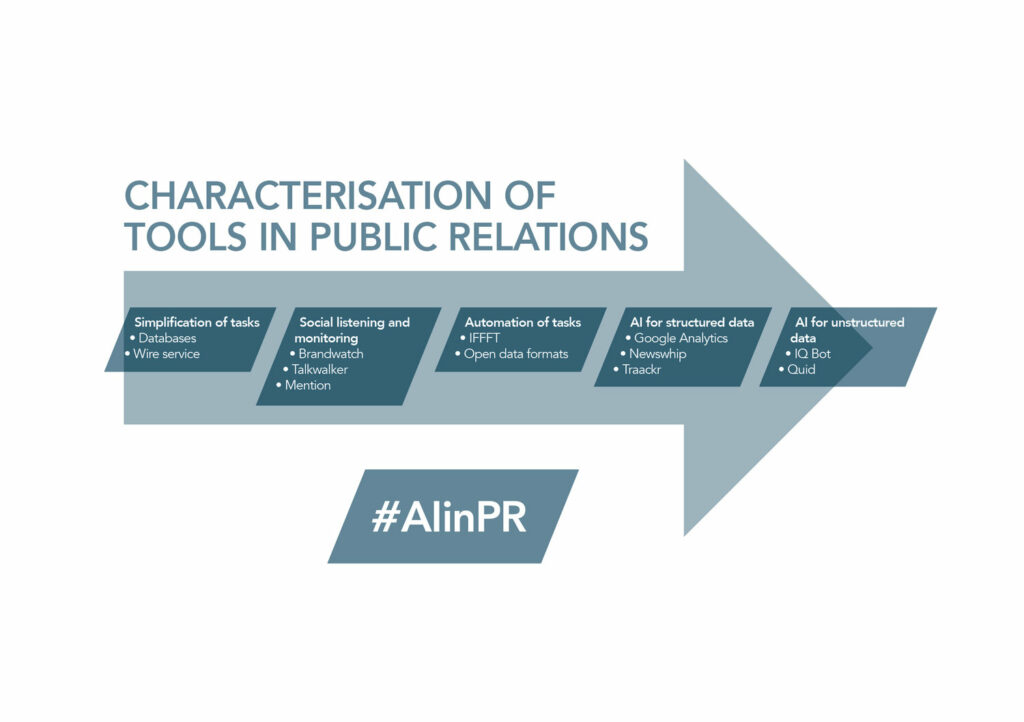Practitioners in the UK widely agree that the PR industry is sleepwalking into AI. But how is AI going to impact entry-level roles in the industry? Would this affect the day to day roles done by young PR practitioners?
The Impact of AI Tools and Automation:
With the vast use of AI tools in day to day PR activities, it is evident that most of the entry-level roles in the industry can be automated. The ONS report (2019) estimates over 27% of the PR jobs are at the risk of automation. Day to day PR activities including content creation, research and monitoring campaigns are being automated or involve some for of AI.
According to a report published by CIPR by Jean Valin (2019) argues, “humans are still needed“. PR bodies in the industry are under the utmost coercion of professional uncertainty about the impact of Artificial Intelligence on entry-level PR jobs. More than one out of three (38%) of PR skills are at the risk of getting replaced by AI.
A report launched at the Alan Turing Institute by the CIPR #AIinPR Panel, talks about the impact of AI on day to day PR activities changing the nature of work done by practitioners. Professor Anne Gregory, Hon FCIPR, shares, “AI would disproportionately impact specific groups including those without qualifications and entrants to the profession”.
Most PR agencies are already using AI tools to monitor social media and depict media trends, by using tools like Buzzsumo, Trendkite and Hootsuite. Organisations including in house communications team, PR Agencies and relying on AI to enhance their abilities to work on social media and dealing with the media.

What role would young PR practitioners play?
The advent of AI in Public Relations has raised immediate concerns related to its impact on entry-level roles. So, what would young practitioners do in the comms industry?
Irrespective of day to day activities being automated, there is a dire need of young PR practitioners who are accustomed to the AI tools available online. Their knowledge of AI and Automation tools combined with creativity would run the PR industry in the years to come.
Practitioners agree that entry-level roles are susceptible to automation, however, there will be new roles and openings that would involve more management and creativity involved. AI and automation tools would free up practitioners to focus on the more human aspect of the job including communicating with their audience, clients and stakeholders.
Most senior PR pros advice the young and aspiring PR professionals to educate themselves and get accustomed to the implication of AI tools. CIPR #AIinPR Chair, Kerry Sheehan agrees how important it is to educate and spread awareness about the AI tools available in the PR industry. She advices to “upskill young practitioners to work smarter and faster in their roles…and also get equipped to advise on AI adoption and deployment within organisations and business and to its stakeholders and society.”
In conclusion, the reality is public relations still requires young minds, their creativity, sensitivity, emotional intelligence and innovative strategies. AI is far fetched from replacing these abilities. Irrespective of day to day tasks being automated, human intervention is essential for ethical workflow.
We just need to keep up!
Guest blog by Rishav Chatterjee @The_PRMan
